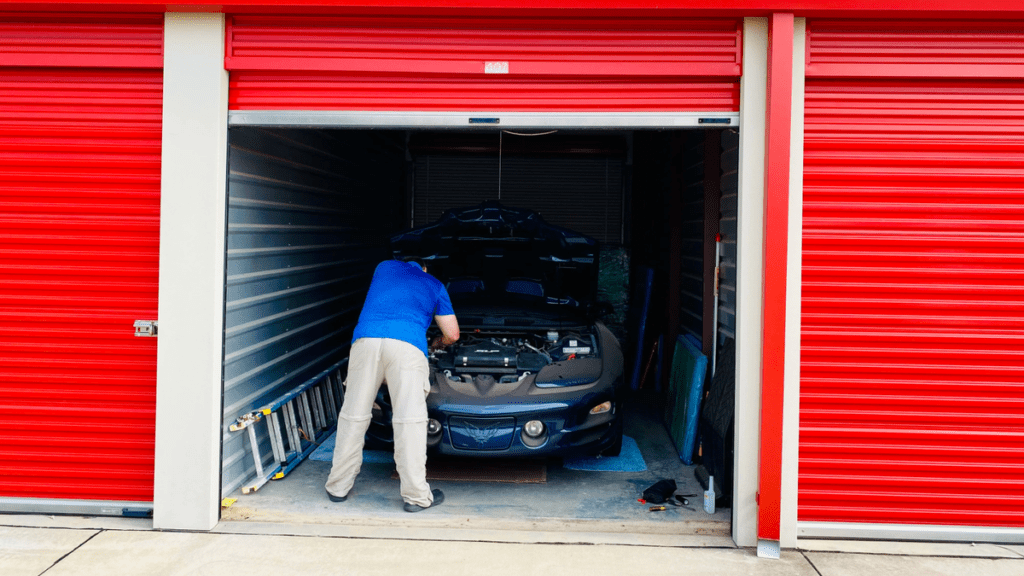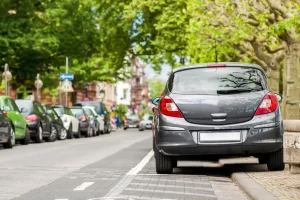How To Store A Car For Any Length Of Time

At some point in your tenure as a car enthusiast you will surely find the need to put your car away for a while. If you live in a northern climate with salt-ridden streets it becomes a necessity at least annually if you want to avoid expensive welding and painting rust-removal procedures every leap year. Whether you’re storing a car for a week, several years, or anywhere in between, here’s your guide to safe and comfortable car storage.
Stainless Steel Is Way Better for Appliances, Not Cars
One Week
If you’re storing your car for a week or two, say you’re going on vacation or a work trip, the procedure is pretty short and straightforward. Most cars will have no problem sitting for a couple of weeks without any prep at all, but you care about your car, don’t you? Follow the three simple Cs: clean, cover, and charge.
Give your car a wash before putting it in the garage while you’re out. It’s a good idea to wash your car fairly often anyway, but if you’re going to jam a car cover on it, you want the paint to be free of dust, dirt, and debris to avoid scratches. A good wax job will also help protect the paint while in storage.
Your car’s battery will probably be fine if you let it sit for a couple of weeks, but it’s better to be safe than sorry. Pick up a quality battery maintenance charger and get that thing plugged in. I own a CTEK MXS 5.0 and a NOCO Genius 10, and recommend them both quite highly. You don’t have to go quite that high-end to maintain a battery charge; a simple two-amp charger should do the trick for storage needs.
If the car is garaged you may decide you don’t want a car cover, but I still recommend a flannel indoor cover just in case. You never know when a ladder or tool is going to fall off the wall, and that extra layer of protection just might be enough to avoid serious body damage. Plus it’ll keep the dust and dirt off your car, which means it’ll look all that much better when you get back from your trip. If you’re storing it outside, definitely get yourself a weather-proof car cover.
One Month
Leaving a car unattended for a month takes a little bit more prep than just a week. If you’re gone for a month, say to backpack around Europe or to serve a trespassing charge (assuming you have a little time to prepare for your trip), you’ll want to take a few extra precautions to avoid pests, rust, and mold.
Especially in the colder months, your parked car can be a warm and inviting place for critters to hang out and build a home. You’ll want to spend a little time spraying the engine compartment with an anti-rodent mint spray, and put down some pest traps on the floor. If you can block access to confined spaces that rodents like to occupy, such as your air filter housing or your glovebox, do it. To repel bugs from your car interior, I like to use little containers of cedar oil because I prefer the scent to mothballs, though fresh cuttings of cedar wood will also work.
While you’re working on the interior of your car to bug-and-rodent-proof it, give it a once-over with a vacuum and some cleaning supplies. The dribblings from your Nature Valley oat and honey bars ground into the carpet are exactly the kind of thing to attract the unwanted attention of pests. Depending on the humidity levels in your area, soil, food and skin particles can begin to form mold in your carpets pretty quickly, too.
The last thing you should do before putting your car up for a month is to absolutely brim the thing with fuel. With a full tank there’s less likely to be humid air in your tank, which can cause the tank to rust from the inside. It’s just a good idea.
Six Months
If your car is going to sit for six months, say if you’re spending the winter at your Palm Springs house or doing a stretch for b&e at San Quentin, you can follow all of the above advice, but add a couple extra tasks to your list. While previous tasks have been focused on immediate and obvious damage to your car, this is where you start getting into the prevention of longer term damage to unseen and internal components.
Give your car’s engine an oil change immediately before putting it away for a long nap. The old oil in your car’s sump will have some level of metals and corrosive acidic sludge in it, so you want to get that out of there. Throw in some new oil with a moderate detergent in it to keep everything clean. Turn the engine over a few times with the new oil to make sure everything has a film of oil on it to prevent internal corrosion.
To keep your tires round, throw your car up on jack stands for longer stints, then chock the bottoms of the wheels so the suspension isn’t sitting at full droop. This will keep your tires from flat spotting from sitting with the weight of the car on them.
Every fall you should get underneath your car and spray it out with a power washer to get all the dirt and grime out of there. Then you can apply the rust preventative of your choosing. An anti-corrosion coating will go a long way to keeping your car from rotting, especially if it’s put away for the winter.
One Year
A year is a long time to let a car sit. You might be able to risk letting it sit as-is if the car is stored in a warm dry location, but a lot can happen in a year that likely wouldn’t happen in six months or less. After consulting with a few museums, vintage car collectors, and the Department of the Interior, here’s a quick rundown of all the stuff you will want to do before taking off on a one-year cruise around the world.
An easy one, especially if the car is already on jack stands, is to make sure the parking brake is disengaged. The parking brake shoes (or pads depending on your system) can rust themselves in place and potentially prevent the car from moving. You don’t want to have to deal with that when you get back from a long trip, so just make sure you have it off when you leave.
Put some fuel stabilizer in your gas tank. Fuel-stabilized gas should last between a year and three years without breaking down too much to be useable.
Before taking off you should lubricate all of the rubber on your car with some silicone spray, and make double sure you wipe some on all of your door seals to keep them nice and pliable. Your door and hood/trunk hinges, as well as the door and hood/trunk latches, should also be hit with a dollop of white lithium grease spray to keep them from corroding. Whether you’re storing your car or not, this is a good idea to do annually anyway.
Any existing rust on your car should be dealt with as soon as you notice it, but especially before letting a car sit for a year or more. If there is already rust on the car, you’ll want to wire wheel as much of it off as you can, and paint on some rust converter to keep it from spreading.
Longer
If you’re going to make your car sit unused for more than a year, you’re going to need to seriously prepare it for long-term cold storage. There’s a lot to preserving a car that isn’t regularly getting exercised. Even most high-end car collectors who have expensive collections often don’t follow these tips, but they really should if they don’t want big repair bills if they ever decide to actually fire them up.
You want to do everything you would have done in previous steps, but take everything just a little bit further. You’re looking to avoid any kind of corrosion or internal damage. At this point water is your biggest enemy, because it can cause all kinds of shit to go wrong over a long enough time. Have you ever seen the Grand Canyon? Water did that, man.
Your car’s engine is going to need some touch-ups. First, you’ll want to take the spark plugs out, fog each cylinder with oil mist, and turn the engine over a few times to get it all over the walls of the cylinders. Then you will want to absolutely brim your oil system with clean quality oil to keep water in the air from corroding your internals. Your transmission is less susceptible to long-term issues, but it’s a good idea to give the fluid a flush before parking it long term, and if you feel the need, you can over-fill the transmission and differential, as well.
The coolant system is another place where corrosion can cause major issues over time. Get yourself a ton of distilled water and flush the system through until it runs clear. Then drain it all out again once more and leave the drains and filler cap open. Pull some air through the system with a wet/dry vacuum just for an extra level of dry. Compressed air isn’t recommended, as these systems aren’t built for super high pressures.
Your hydraulic systems, particularly brake lines, are susceptible to long-term water corrosion as well. Brake fluid is extremely hygroscopic, which means it absorbs water from the air. Over time that water can rust right through your brake lines. The best practice here is to flush all of the fluid out of your brake lines with ethanol, and dry the insides of the lines with compressed air. Be sure to compress the pistons of your calipers as well to force all of the old fluid out of them.
Brace your clutch pedal so that it remains compressed for the entirety of the length of storage time. This will push the pressure plate away from the clutch disc, preventing the friction material from seizing to either face. There is some risk here to fatigue on the pressure plate springs, but I’d rather risk replacing the pressure plate than the whole shooting match.
Unlike earlier plans, which recommended filling the gas tank to the top to keep water out, you’ll now have issues with your gas going bad in long-term storage. It’s best to just drain the tank altogether, let it dry out, then fog the inside of the tank with oil to prevent corrosion.
And finally, make sure you go over every single one of your car’s grease fittings and push fresh grease into all of the joints. Many modern components are not user-serviceable, but most cars built prior to the 1970s will require greasing.
Make sure you put a label on the steering wheel and the key to remind yourself not to start the damn thing before draining out the excess fluids, adding gasoline, and re-filling and bleeding the hydraulic systems.


